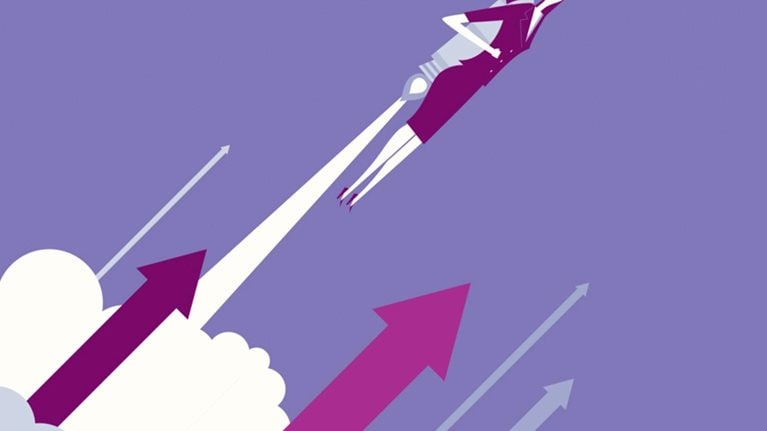There is a growing consensus among top executives that gender diversity is both an ethical and a business imperative. Yet progress is painfully slow. Despite modest improvements, women are underrepresented at every level of today’s corporations, especially in senior positions.
We’re quite cognizant of how difficult it is to make progress. Despite the fact that McKinsey has, for a number of years, been conducting research that has helped our firm and many other companies improve their gender balance—for example, through our Women Matter initiative,1 led by Sandrine Devillard, one of this essay’s coauthors—we’re not yet where we want to be. Women now represent about 39 percent of McKinsey’s entry-level hires, but occupy just 11 percent of the senior-leadership roles within the firm. There are currently four women (including Judith Hazlewood, one of this article’s coauthors) on our 30-member Shareholders Council.
These numbers are certainly up from a decade ago, but less than we would like. Our ability to help our clients with their toughest problems depends on attracting and retaining the world’s best people, who can offer the diverse perspectives that enhance creative problem solving. Although we are glad to be making progress, including recently being named one of Working Mother magazine’s top ten companies for women,2 we know we would be a better firm if we had more top female talent. That’s why we have committed publicly, through the United Nations’ HeForShe initiative and the 30% Club,3 to some ambitious gender goals for our firm over the next five years—ones that won’t be trivial to achieve.
The persistence of the gender gap
We believe there are several reasons the gender gap so stubbornly persists. For one, in many organizations, senior leadership has only recently committed itself to addressing this challenge. A Women Matter study showed that gender diversity was a top-ten strategic priority for only 28 percent of companies in 2010—and for a third of companies, it was not on the strategic agenda at all. It’s widely acknowledged that without a commitment from the top, nearly any major change program will fail.
Our experience has been that top-down targets make a difference. We didn’t set explicit gender goals for McKinsey until 2014, and in just one year after doing so, our intake of female consultants has increased by five percentage points. We’re encouraged by this, and by the fact that a growing number of companies are recognizing the case for gender parity and declaring their determination to pursue and achieve it. Our hope is that initiatives like HeForShe, in which we are participating, are just the start of a growing wave of increased transparency and more ambitious goals.
A second reason for sluggish progress has to do with the nature of the gender inequality issue itself, which, like many efforts to change organizational cultures, requires companies to take action across a broad range of factors and keep their managers aligned with multiple objectives for years at a time. Our research shows that the focus in these interventions must be to help women better develop as leaders, and to design the conditions in which this can take place. Crucial aspects include sponsoring (not just mentoring), neutralizing the effects of maternity leave and ongoing parenting responsibilities on career advancement and wage increases, and evolving the criteria companies use for promotions to include a diversity of leadership styles.
The complex dynamics of the gender issue create a variety of challenges. Consider sponsorship: it’s easy to say more is needed, but we’ve found that women at McKinsey are disproportionately sponsored by other women, which places a higher burden on our more senior women relative to senior men. This surely limits the sponsorship they are able to provide. Similarly, while the anytime-anywhere model that currently prevails in the corporate world has placed everyone under more pressure, the weight surely is heavier for women, who continue to shoulder a disproportionate share of the responsibility for managing home and family issues. These forces challenge women at McKinsey—a recent internal diagnostic confirmed the persistence of gender-based roles at home for many women at the firm—and we believe they are emblematic of those faced by women in many organizations.
Addressing these interrelated gender issues is difficult, which brings us to a third reason change has been slow: major transformation efforts require steady, broad-based interventions over time. After an initial commitment from the top, significant changes can typically take as many as eight or more years, requiring the close and visible monitoring of progress by the executive team. It’s never easy and it’s rarely quick.4
Beyond the factors we’ve mentioned lies at least one other that is mostly exogenous to private-sector institutions. Economic equality for women, to no small degree, depends on achieving a sweeping set of social-equality reforms. Is it the business of executives to help solve broader social issues? We would say yes, provided they don’t distract from the very real issues executives face in their own organizations.
Would you like to learn more about our People & Organizational Performance Practice?
The road ahead
Is it, then, only a matter of time before gender equality will be achieved? Yes and no. To the extent that private and public institutions have made the necessary commitment from the top and are working to intervene in the ecosystem of change, we are confident they will, given time, reach their goal. Too many companies have yet to grasp the case for change, however, and still lack both commitment and a program of action. For these institutions, gender parity will take longer to achieve.
As a member of the 30% Club, our global managing director Dominic Barton (also a coauthor here) is one of 47 US chairpersons and CEO members who have publicly committed to better gender equality at all levels. This commitment reinforces efforts we have under way to challenge fundamental mind-sets and behaviors inside the firm while setting (or continuing) in motion a number of initiatives in support of gender diversity. These range from new flexibility programs, adjustments to travel expectations, and upgrades to maternity benefits, among others. We’re working also to improve the quality of sponsorship women receive at the firm. A new diagnostic we’re piloting, for instance, aims to create transparency in the sponsorship arrangements among all our consultants, many of whom we have found to be unsure what good sponsorship entails or how to create it when it’s lacking. To help make all this happen, we now have a global team of managers fully dedicated to this issue, and a network of deeply passionate leaders actively driving this topic throughout the firm.
We’re acutely aware that there will be surprises along the way. Here’s one: so far, a higher percentage of men than women have been taking advantage of some of our flexibility programs. Do some women at McKinsey, like their counterparts at many companies, worry that participating in such programs will raise questions about how committed they are to their careers? We hope not, but we are exploring ways to dispel any concerns—for example, by refining our “up or out” promotion system to ensure people can stay in the same roles for longer periods of time with no impact on their eventual advancement if they are at a stage in life where they need that flexibility. As a project-based organization, we think we’re reasonably well positioned to pull this off.
Clearly, we don’t have all the answers. Gender inequality is a multifaceted, entrenched global issue. But our commitment to diversity and inclusion is an abiding part of our firm’s history and daily practice. That we have yet to achieve it only further strengthens our determination to do so.


